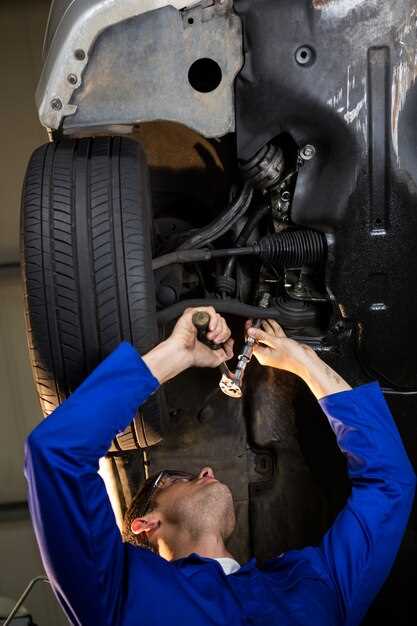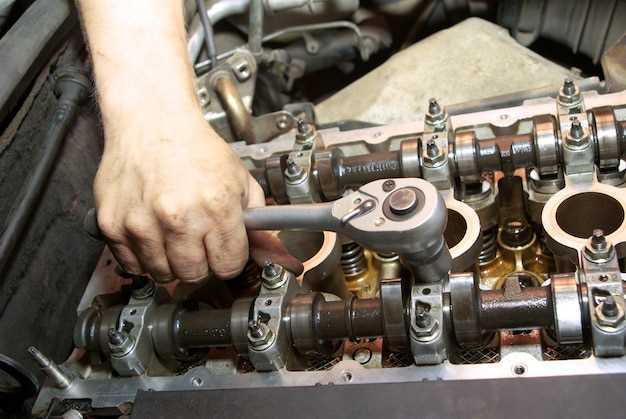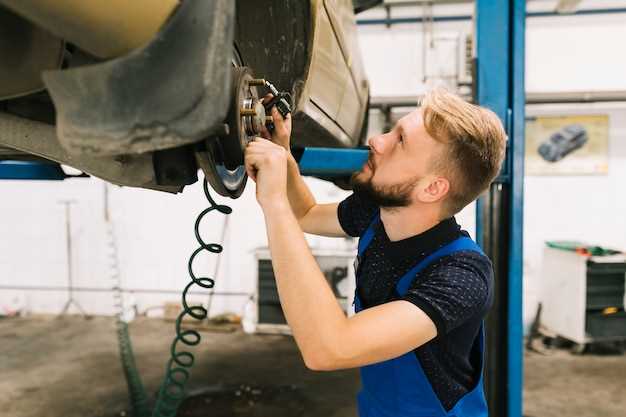
Maintaining your vehicle’s steering system is crucial for ensuring safe and responsive handling. One of the key components of this system is the tie rods. These rods connect the steering rack to the wheels, allowing for precise control. Over time, tie rods can become loose due to wear and tear, leading to compromised steering performance and increased tire wear.
When tie rods begin to show signs of looseness, it can result in a noticeable change in your vehicle’s handling. You may experience wandering when driving straight, or you might hear a clunking noise during turns. If left unaddressed, damaged tie rods can affect other components of the steering and suspension system, resulting in costly repairs and potential safety hazards.
This guide will provide you with a comprehensive overview of how to replace tie rods as part of regular vehicle maintenance. Whether you are a seasoned mechanic or a DIY enthusiast, understanding the role of tie rods and recognizing the signs of wear will help you maintain optimal steering performance and prolong the life of your vehicle.
Identifying Symptoms of Worn Tie Rods and Loose Steering
Worn tie rods can significantly affect the handling and safety of your vehicle. Identifying the symptoms early can prevent more extensive damage and is essential for maintaining proper steering performance. One of the first signs of trouble is a noticeable looseness in the steering. This can manifest as a vague or unresponsive feeling when turning the steering wheel, which indicates that the tie rods may not be secure.
Another symptom to look for is excessive play in the steering wheel. If you notice that the steering wheel has more movement than usual without corresponding changes in the vehicle’s direction, this could be a clear indicator of deteriorating tie rods. Additionally, listen for clunking or knocking noises while driving, especially when hitting bumps or making sharp turns. These sounds can signal that the tie rod ends are worn and may eventually fail.
Moreover, uneven tire wear is a crucial symptom that can point to faulty tie rods. Inspect your tires for unusual wear patterns, particularly on the inner or outer edges. If your tie rods are not functioning correctly, they can lead to misalignment, causing tires to wear unevenly and requiring frequent replacements.
Finally, if you experience a decrease in steering precision or if the vehicle pulls to one side while driving, these are serious warning signs. Such behavior can stem from worn tie rods, which compromise the vehicle’s ability to maintain a straight path. Addressing these symptoms promptly will ensure better control and safety while driving.
Step-by-Step Process for Removing and Installing Tie Rods

Replacing tie rods is essential for maintaining vehicle steering and suspension. Follow these detailed steps to ensure a successful removal and installation of tie rods.
1. Gather Necessary Tools and Materials
Prepare a socket set, torque wrench, tie rod puller, and a pair of gloves. Wear safety goggles to protect your eyes during the process.
2. Lift the Vehicle
Use a jack to lift the front of the vehicle and secure it with jack stands. Ensure the vehicle is stable before working underneath.
3. Remove the Wheel
Take off the lug nuts and then remove the wheel. This will provide access to the tie rods and suspension components.
4. Inspect the Tie Rods
Check the existing tie rods for signs of wear or damage. If they are loose, it may cause steering issues and should be replaced.
5. Disconnect the Outer Tie Rod
Locate the cotter pin securing the outer tie rod end to the steering knuckle. Remove the cotter pin using pliers, and then use the tie rod puller to disconnect the outer tie rod from the knuckle.
6. Remove the Inner Tie Rod
Use a wrench to disconnect the inner tie rod from the steering rack. Be cautious, as this may require some force if it has not been replaced for a long time.
7. Install the New Tie Rod
Start by threading the new inner tie rod into the steering rack. Ensure it is securely fastened but avoid overtightening. Then, attach the outer tie rod to the steering knuckle and secure it with a new cotter pin.
8. Reattach the Wheel
Place the wheel back on the hub and hand-tighten the lug nuts. Lower the vehicle back to the ground and use a torque wrench to tighten the lug nuts to the manufacturer’s specifications.
9. Check Alignment
After installation, have the vehicle’s wheel alignment checked. Misalignment may affect handling and tire wear.
10. Test Drive
Finally, take the vehicle for a test drive. Observe the steering feel and check for any unusual noises. If everything feels tight and secure, the replacement is successful.
Tools and Safety Precautions for Tie Rod Replacement

When replacing tie rods, having the right tools is essential for a successful and safe process. The primary tools you will need include a socket set, a wrench, and a tie rod end puller. A wheel chock is also important to prevent the vehicle from rolling while you work, ensuring your safety.
Before starting, ensure your vehicle is parked on a level surface and engage the parking brake. This will help prevent any movement during the replacement. Wearing safety goggles is recommended to protect your eyes from debris when loosening or tightening the tie rods.
Next, inspect the steering system for any loose components before proceeding. If you notice any signs of wear or looseness, it is crucial to address them to avoid further damage to the steering system. A torque wrench is useful for securing fittings to the manufacturer’s specifications, which is critical for maintaining vehicle performance.
During the replacement process, take your time and follow each step methodically. If you feel uncertain about any part of the procedure, consult the vehicle’s repair manual or seek professional guidance. Safety should always come first when handling steering components, as a loose tie rod can significantly affect vehicle stability and control.

